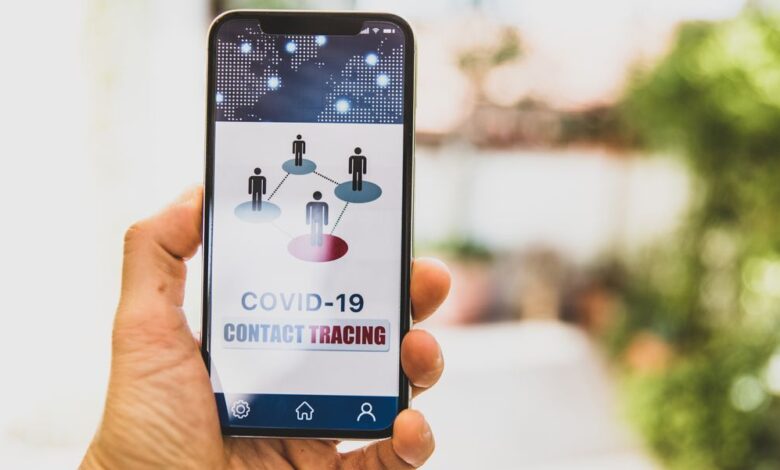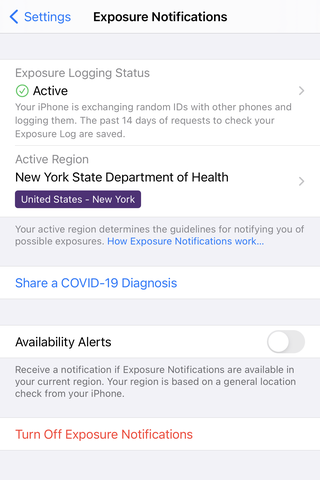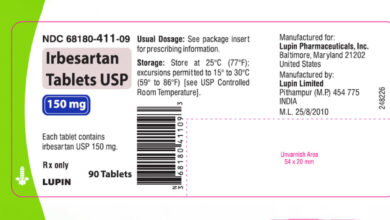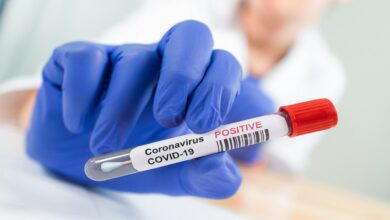COVID-19 Contact Tracing on iPhone

Last year, tech giants Apple and Google teamed up to create features that would enable Americans to enroll in digital novel coronavirus contact tracing programs with iPhone and Android devices. But the contact tracing programs have slowly rolled out in states individually across the nation throughout late 2020, and many smartphone users are just now being prompted to sign up for the first time. Apple iOS updates in September, for example, included rollouts for back-end capability for “Exposure Notifications” to most iPhones, per Forbes; depending on where you live, state health departments may already be working in conjunction with these tech giants in your area.
An Apple representative tells Good Housekeeping that participation in states is trending upwards; in California, over 30% of adults have opted into exposure notifications, and in Washington D.C., 53% of the nation capitol’s residents have enabled the program as well. Early data collected by the Alan Turing Institute at Oxford University overseas in England suggests that 600,000 cases have been “prevented by the app” since its launch in September 2020.
But how does the digital contact tracing program work exactly, and what data are tech companies collecting?
The entire system is based on Bluetooth capabilities, across devices made by Apple or Android. People who enroll in digital contact tracing will enable their phones to send out an invisible beacon routinely throughout the day, “a string of random numbers that aren’t tied to a user’s identity” per Apple. If you’re in public, other phones will be listening and trading their beacons with yours, creating a record when two people “cross” each other’s paths, so to speak. This record is only stored for 14 days before it is deleted (and users can manually delete records at any time before that point).
This content is imported from YouTube. You may be able to find the same content in another format, or you may be able to find more information, at their web site.
Contact tracing hinges on the fact that both Apple and Android users who have enrolled in the program can, at any point, report that they’ve tested positive for COVID-19. When someone confirms their diagnosis, the program then prompts a notification to be sent to each and every phone that had recently exchanged beacons with this user’s device.
A few key things to understand: “User identity will not be shared with other users, Apple or Google as part of this process,” current guidance reads. A notification will share the date and general time of when you personally became exposed, and may even indicate how close a sick individual was to you — mostly, however, the notification will prompt you to monitor for any symptoms, isolate and to receive testing if possible.
On the other end, a positive COVID-19 diagnosis from a doctor or testing clinic can’t be automatically added to said person’s device; it requires that the user manually enter a form of confirmation willingly.
Participating in digital COVID-19 tracing is entirely optional: Users must enroll their device in the program before their phone can start logging nearby devices. And since privacy can obviously be a concern, both Apple and Google have also made it easy to stop participating in the program with the tap of a few buttons. Below, we’re recapping how you can enable and disable exposure notifications, and what you can expect from participating as a whole.
How to enable COVID-19 exposure notifications on your phone:
If you’re an iPhone user, your state’s health department may be involved in pushing a notification to your device to indicate that exposure notifications are now available in your area. But in other states, the capability may be available on your device without you knowing it.
In any case, you’ll need to do the following to get your phone enrolled in exposure notifications:
- Open Settings, and then navigate down to the Exposure Notifications tab.
- Once there, you’ll need to tap “Turn On Exposure Notifications” and press continue in the pop up menu that appears.
- You’ll then select your country and region or state. At this point, if your state health department has a partnership with Apple (or Google!) to source information from the program, you may be notified as such — or you may be prompted to download a third party application that has been designed for your state specifically.
- A pop up may appear asking for permission to enable “exposure logging and notifications.” Click “Enable,” and your phone will immediately begin tracking (and distributing) beacons to anyone you pass by in public spaces.
For Android devices, you’ll have to download a specific app. You can see the step-by-step instructions here.
If your state has its own mobile app designed for COVID-19 contact tracing, it’s important to download it and enable notifications as well. For those living in California, for example, the state’s CA Notify application can be the direct service to notify you about any exposures to COVID-19 — not Apple or Android operating systems alone. You should check your state’s health department web portal to ensure it doesn’t maintain its own COVID-19 digital contact tracing program or application.
Does COVID-19 contract tracing keep my information secure?
Engineers at the two tech companies have gone to great lengths to ensure anonymity for anyone involved in the program. Here are all the ways in which information is protected, according to Apple:
- While beacons are tracked, location data is not shared with any state health authority, Apple, or Google on the back end. You aren’t creating a “map” of your daily movements.
- The Bluetooth beacons are randomized every 20 minutes, which helps prevent tracking of any sort by others.
- Notifications will only remain on the phone that you enroll; they won’t be shared with any other Apple device under the same Apple ID, for example.
- The data generated by beacons is kept directly on the phone until a user manually indicates they’ve tested positive for COVID-19, or if another person who you’ve come in contact with has indicated they’ve tested positive.
- The system is only used to assist public health authorities and not for other proprietary uses. “There will be no monetization from this project by Apple or Google,” guidance reads.
- Google and Apple will automatically disable contact tracing programs in regions when it isn’t needed any longer, per direction from local health authorities.
Some may be concerned about data shared with health authorities, but users will need to consent to share any device communication with third-party state health departments beforehand; Apple and Google won’t have access to information that can identify an individual directly. You can learn more about Apple and Google’s privacy policy here, and learn more about your health privacy from officials at the Centers for Disease Control and Prevention here.
This content is imported from Instagram. You may be able to find the same content in another format, or you may be able to find more information, at their web site.
How to disable COVID-19 exposure notifications on your phone:
It’s simple! If you’re an iPhone user, you’ll navigate to the same tab in Settings and select “Turn Off Exposure Notifications.” If you’d like to delete all of the records that are temporarily stored on your phone directly, simply click into “Exposure Logging Status” and select “Delete Exposure Log.” Android users can navigate to Settings, select “Google” and then “COVID-19 Exposure Notifications” before selecting “Turn Off Exposure Notifications.”
If you’ve downloaded your state’s individual contact tracing app, you’ll need to delete it from your phone or manually uninstall it directly to stop participation entirely.
Will I be required to download a contact tracing app for COVID-19 on my phone?
Short answer: No. CDC officials maintain that state and local health departments often default to “case management tools” to execute contact tracing when necessary, not digital applications. Since you are not required to download any tracing apps or enroll in Apple and Google’s Exposure Notifications, you may still receive calls or emails from the health department after you’ve tested positive for COVID-19 at any point in time.
This content is created and maintained by a third party, and imported onto this page to help users provide their email addresses. You may be able to find more information about this and similar content at piano.io
Source link




